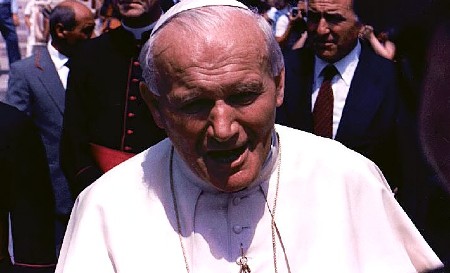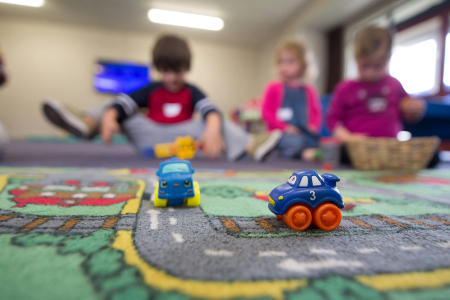 Hi readers, it seems you use Catholic Online a lot; that's great! It's a little awkward to ask, but we need your help. If you have already donated, we sincerely thank you. We're not salespeople, but we depend on donations averaging $14.76 and fewer than 1% of readers give. If you donate just $5.00, the price of your coffee, Catholic Online School could keep thriving. Thank you. Help Now >
Hi readers, it seems you use Catholic Online a lot; that's great! It's a little awkward to ask, but we need your help. If you have already donated, we sincerely thank you. We're not salespeople, but we depend on donations averaging $14.76 and fewer than 1% of readers give. If you donate just $5.00, the price of your coffee, Catholic Online School could keep thriving. Thank you. Help Now >
A Dance With Grief: The Hard Work of Healing
FREE Catholic Classes
Grieving can come in so many forms not just from the loss of a loved one. Couples mourn the loss of children they aren't able to conceive. A man grieves the loss of his ability to provide an income for his family. A woman weeps over the loss of her breast to cancer. A child cries over an absent father. An old woman agonizes over the loss of her memory. In this fast paced age of anti-depressants and unrealistic ideas of the ways and means to true happiness, it is no surprise that people are suffering in silence.
Highlights
Catholic Online (https://www.catholic.org)
10/26/2013 (1 decade ago)
Published in Living Faith
Keywords: healing, grieving, death, dying, Kubler-Ross, Tara K. E. Brelinsky
P>ZEBULON,NC (Catholic Online) Grieving can come in so many forms not just from the loss of a loved one. Couples mourn the loss of children they aren't able to conceive. A man grieves the loss of his ability to provide an income for his family. A woman weeps over the loss of her breast to cancer. A child cries over an absent father. An old woman agonizes over the loss of her memory.
In this fast paced age of anti-depressants and unrealistic ideas of the ways and means to true happiness, it is no surprise that people are suffering in silence. They are eating, swallowing, smoking and injecting their pain away. We've been sold on an idea of what life is meant to look and feel like, pretty and easy. So when real life occurs we are broadsided and unfamiliar with the hard work of healing.
Having just spent some part of the night curled up on the hard waiting room floor, I awoke and made my way down the long corridor of our temporary lodging, the Pediatric Intensive Care Unit. His room was on the right at the end of the hall, his bed the first one to the left. Freshly scrubbed in, I eagerly greeted my sweet firstborn, who was lying still and quiet in his sterile, warming bed.
It's a curious mechanism our brain has to shield us from trauma. Perhaps, we could call it hopeful vision, the way we can miss the signs of impeding sorrow. We'd been on the roller coaster of good days and bad nights for weeks, but my hopeful eyes saw a future beyond the web of wires and tubes.
"Things aren't looking so good," the day nurse said gravely. Swelling and fluid, more drainage tubes and another procedure are words I can recall from that early morning conversation. Dazed and confused, I made my way back down the stretch of corridor to the pay phone in order to tell my husband he must hurry back. He'd only just returned at work, but there was no time to spare.
Some time later, once again relegated to that stiff, cold waiting room, my husband and I sat side by side staring into the thin air. That's when he walked in and took up the seat beside us. I'm not sure if the room had been empty of others before his arrival or if our fellow parents had silently vacated upon his arrival, but when the chaplain took his seat we were his only companions.
Only a week or so earlier, another family sat alone in that waiting room. Holed up in that room of tears, they received the news that their beloved daughter had lost her battle against sickle cell disease. The chaplain requested that we give them the space and time they needed, so the rest of us parents lingered in the hallways or made our way to the second, less popular waiting room around the corner.
Now I realized in that moment with the chaplain seated beside us, it was our turn. I held my breath in dreaded anticipation.
The chaplain, with compassion in his eyes and tenderness in his voice, called our attention to the flurry of doctors and staff who'd rushed down that endless corridor. He didn't have definitive facts, but he'd taken note of their concerned expressions and the larger than normal number of white coats crowded into that room on the right.
In the hours to follow, the blinders peeled back and we would see our son's bloated form lying with an ever increasing limpness. Curtains drawn around us, the other patient in that shared hospital room seemed to disappear. I'd grown accustomed to the silence of sickness, but in those torturous hours I begged for some confirmation of the transition between life and death. I had only the machines to provide me clues.
Then, numbers declining, I lifted up my child along with the twist of leads and tubes and pressed him close to my body, where only a short month before he had resided. His daddy, standing behind me, encircled the two of us in his strong arms. Our trinity held fast until the last breath of life escaped our baby's lips and his heart took its final rest.
On that day my first extensive journey into grieving began. Elisabeth Kübler-Ross laid out the steps to the dance I was about to undertake. Denial, anger, bargaining and depression spun me around like a ballet dancer practicing her pirouette.
I can remember the exact location and approximate time of day when I first accepted that my son had died and he wasn't going to be miraculously resurrected in my lifetime. A few months had gone by since we'd handed his lifeless body to the hospital chaplain that August evening and I was driving on the highway home from work. Like a wave that overwhelms, pushing you down under its watery power, I was suddenly and violently awash with the reality that he was gone, really gone. Peculiar sounding I suppose to the non-grieving parent, but I'd secretly believed until that exact minute that my son would be returned to my aching arms somehow. Now the well practiced step of denial mastered in that moment, my concentration was directed to the remaining emotional hurdles.
By the grace of God (quite literally), I discovered The Compassionate Friends (TCF), a national support group of bereaved parents. At the first meeting, during the circle time when they'd go around and share their stories, I developed a lump in my throat the size of a lemon and couldn't utter a single word. While unable to pour out our history on that first evening, I began to learn the motions required to participate in the day to day masquerade of living (how to fake a smile, how to pretend your heart isn't broken in two).
A couple of sessions later, a beautiful, mature woman named Marie taught me a life lesson that I will never forget. Marie lost her son, Sidney, while she was a young mother. The doctor, in his archaic, old-school thinking, had advised her to "go home and have another baby." Seeing no other way, she followed his callous prescription. Through the course of years her family grew until one day Marie found herself a blessed grandmother. But then her grown daughter lost a son to sudden infant death syndrome (SIDS) and that dance partner grief emerged from his perch on the sidelines to spin this grandmother/mother hard and fast. You see, Marie explained, grieving is difficult work, but work that must be done in order for healing to be accomplished. Having cast aside her early anguish did not negate its affect on her life. It served only to postpone the inevitable task of swaying back and forth to the rhythm of mourning. Now her sadness was multiplied by two.
It took several years to trudge through the quagmire of my dolor. But I followed the path even though it knocked me down hard at times. Like the novice dancer, just as I would gain my footing memories (made and unmade) rushed in to topple me. I would remember a word of encouragement spoken that never came to fruition or revisit the feel of his tiny grip on my finger. There was the first Christmas he'd never get to celebrate and the Easter basket he'd never fill.
This is the period when some of us choose to "get a grip" and push our emotional steps aside. Many times acquaintances on the outside encourage us to forget the hard work and "move on." I received that advice after the six month marker when, to those on the outside, my allotted period of sadness needed to end. However, Marie's advice freed me to embrace my dance partner grief and allow myself to be led along a time line with no predetermined limits.
Unlike that day of reckoning on my drive home from work, I can't pinpoint the time or place when I finally mastered all the poses. But the day did come when I stood tall and straight and crossed over the threshold to acceptance. Of course, an occasional tear still escapes some years on my son's birthday, but it is a healthy tear, one that marks a moment of remembrance and not regret.
Watching an episode of a reality weight loss show, I was intrigued by the story of an overweight couple. Having lost a child years before, they swallowed their emotions (in thought and action). Like Marie, they had to discover that grief lies in wait.
I sometimes ponder whether in times passed, when death wasn't such a foreigner in our lives, if people had a healthier perspective with regards to dying. Children more often didn't grow into adults and old age came sooner. Sickness was treated in the home and the dead weren't visited in a funeral home, but in the family's parlor. The living had to care for their own through every step and generations shared the experience. We were forced through necessity to do the hard work. Distractions and escape were more elusive so that mourners had to visit and revisit the places and markers of our losses.
Grieving can come in so many forms not just from the loss of a loved one. Couples mourn the loss of children they aren't able to conceive. A man grieves the loss of his ability to provide an income for his family. A woman weeps over the loss of her breast to cancer. A child cries over an absent father. An old woman agonizes over the loss of her memory.
In this fast paced age of anti-depressants and unrealistic ideas of the ways and means to true happiness, it is no surprise that people are suffering in silence. They are eating, swallowing, smoking and injecting their pain away. We've been sold on an idea of what life is meant to look and feel like, pretty and easy. So when real life occurs we are broadsided and unfamiliar with the hard work of healing. But if we break out of that misshapen mold and allow ourselves to suffer the cross, to bear its full weight for awhile, then we can be assured of hope, sincere hope, for our future.
For just as Rachel wept inconsolably for her children who were no more, so too we should allow ourselves to sob bitterly for our required time. And then, like Rachel, God will turn our mourning into joy and we will find ourselves healed and able to dance in merriment again.
Then young women shall make merry and dance,
young men and old as well. I will turn their mourning into joy,
I will show them compassion and have them rejoice after their sorrows.
Jer. 31:13
We ask you, humbly: don't scroll away.
Hi readers, it seems you use Catholic Online a lot; that's great! It's a little awkward to ask, but we need your help. If you have already donated, we sincerely thank you. We're not salespeople, but we depend on donations averaging $14.76 and fewer than 1% of readers give. If you donate just $5.00, the price of your coffee, Catholic Online School could keep thriving. Thank you.Help Now >
-----
Tara K. E. Brelinsky is a home schooling mother of eight living children, with six more heavenly ones who intercede. Married to her childhood sweetheart, they make their home in North Carolina where they teach Natural Family Planning, grow a garden, raise two dogs, a cat, a fish, ducks, roosters and a flock of hens (in addition to all those wonderful kids). Tara studied journalism a lifetime ago in college, but now she writes simply for the the glory of God. You can read more of her musings and inspirations on her blog "Blessings In Brelinskyville" (www.http://brelinskyville.blogspot.com/).
---
'Help Give every Student and Teacher FREE resources for a world-class Moral Catholic Education'
Copyright 2021 - Distributed by Catholic Online








 Daily Readings for Thursday, April 25, 2024
Daily Readings for Thursday, April 25, 2024 St. Mark: Saint of the Day for Thursday, April 25, 2024
St. Mark: Saint of the Day for Thursday, April 25, 2024 Prayer for Policemen: Prayer of the Day for Thursday, April 25, 2024
Prayer for Policemen: Prayer of the Day for Thursday, April 25, 2024

